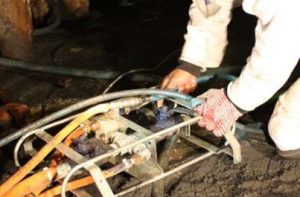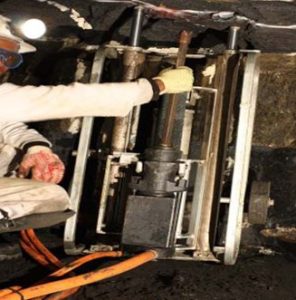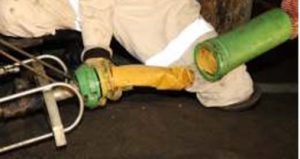The rig must be examined by the operator as follows before start operating the rig
1.All components of the drill rig must be Inspected for damage, wear and proper operation prior to use and the pre-use checklist must be completed.
2.Damaged components must be replaced immediately or if not possible the drill rig must not be used. (Make use of a spare exchange unit)
3.Transport rig to the area where the holes must be drilled.
4.Perform pre-use inspection of rig and accessories.
5.Make sure all valves on control box is in a closed position. (Refer to Picture 5)
6.Check the lubricator and make sure that it is filled with the correct oil. (Refer to picture 6)
7.Open the air valve on the control box and run the drill until the oil is visible at the exhaust ports of the drill
8.After checking that everything is in working order move the rig into position where the support holes must be drilled.
9.Line the rig up and open the clamping rod valve to secure the rig into Position. Make sure the rig is placed on a solid base.
10.Fit the starter jumper. (Refer to picture 10)
11.Move to the control box placed in a safe supported area and slowly lift the drill to the hanging wall and start collaring the hole.
12.When the collaring with the starter jumper is complete move the locking pin, tilt the drill forward (LW) or move the drill sideways to remove the starter Jumper and to install the next jumper.
13.Once drilling the full required length of hole , installation of the TC Cable Anchor must be carried out.
14.Responsible Supervisors must on a random basis (at least weekly) over inspect the drill rigs to ensure damaged equipment is not used and that the operator performs his pre-use inspection to standard


